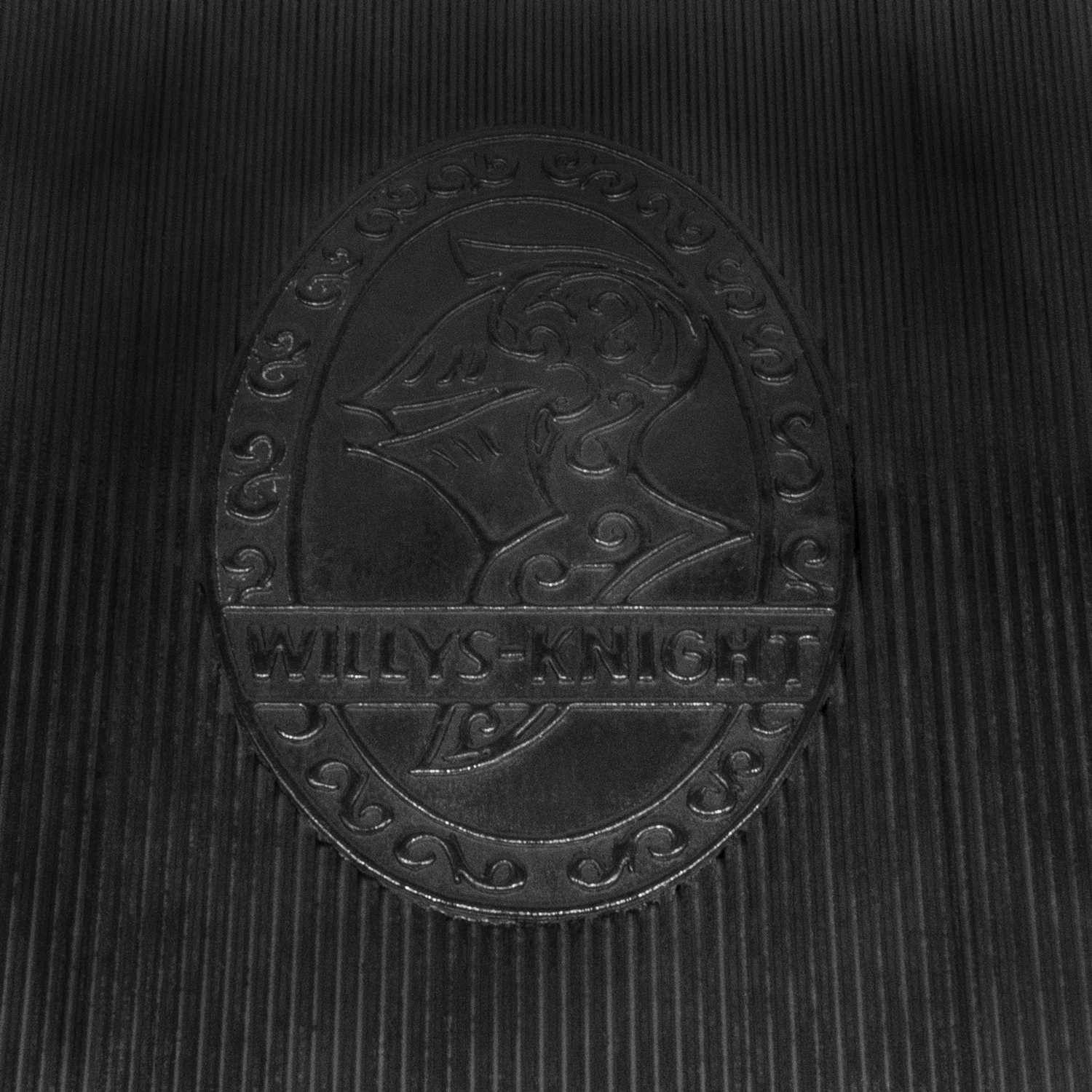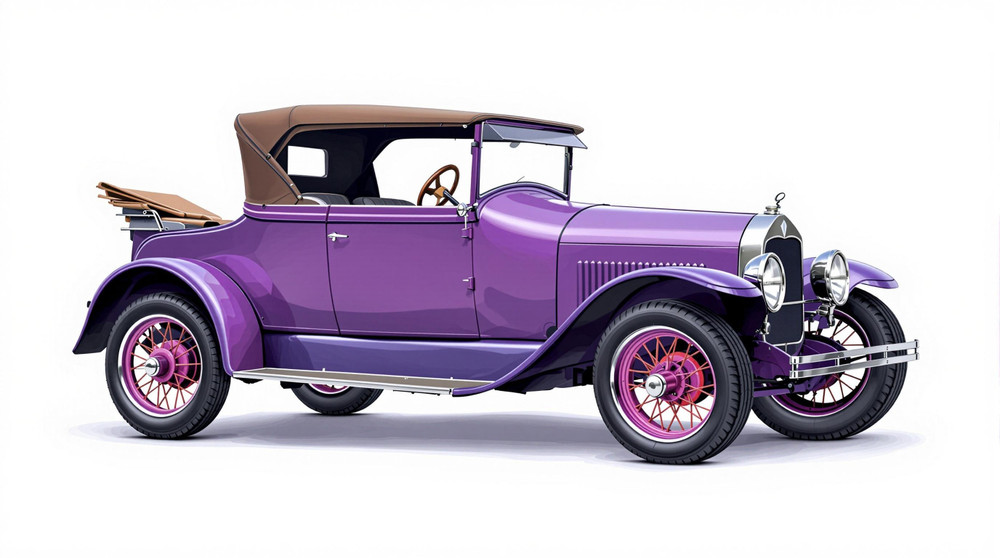Image of 1921 Willys Knight Model 20, Note: These illustrations use artistic license and may differ from actual historical models.
Performance Metrics
Fundamental Metrics
Emotional Appeal
MMP Rating
| Engine Specifications | |
|---|---|
| Engine Options: | Inline 4-cylinder engine |
| Displacement Range: | 3.0L |
| Horsepower Range: | Estimated 20-30 HP |
| Torque: | Not available |
| Compression Ratio: | Not available |
| Ignition System: | Battery and coil |
| Cooling System: | Water-cooled |
| Performance Specifications | |
| 0-60 Time: | Not available |
| 1/4 Mile Time: | Not available |
| Top Speed: | 45-50 mph |
| Transmission and Drive | |
| Drive Type: | Rear-wheel drive |
| Transmission Type: | 3-speed manual |
| Fuel and Efficiency | |
| Fuel System Type: | Carburetor |
| MPG: | Not available |
| Dimensions and Brakes | |
| Brakes: | Mechanical drum brakes |
| Wheelbase: | 112 inches |
| Weight: | Estimated 2500 lbs |
Note: Specifications for classic cars are given to the best of our ability, considering the limited and variant data available.
Stepping Back in Time: The 1921 Willys Knight Model 20
The year is 1921, and the automotive landscape is burgeoning with innovation and style. Among the era's standouts is the Willys Knight Model 20, a vehicle that not only captured the imagination of its generation but also left an indelible mark on automotive history. Crafted by Willys-Overland Company, based in Toledo, Ohio, this car emerged from the mind of John North Willys and showcased the novel sleeve-valve engine technology. A particular highlight in its storied past includes its reputation for silent operation, earning it the nickname "The Silent Knight" and distinguishing it from its noisier contemporaries.
Design and Innovation: A Closer Look at Elegance
The exterior of the Willys Knight Model 20 exudes a classic charm that is both stately and inviting. Its tall, upright grille and round headlamps are emblematic of the era's design ethos, while the wooden-spoke wheels add a touch of rustic elegance. Inside, passengers were treated to a cabin that prioritized comfort with high-quality fabrics and attention to detail that spoke volumes of its craftsmanship. Technologically, the Model 20 was ahead of its time. The sleeve-valve engine provided a quieter and smoother ride compared to traditional poppet-valve engines. Color options ranged from deep blues to rich blacks, with darker hues being popular for their sophisticated appearance. The car came in several body styles, including roadster, coupe, and sedan, with the four-door touring sedan being particularly iconic.
Historical Significance: A Legacy Cast in Iron and Steel
The Willys Knight Model 20 wasn't just another car; it was a harbinger of change in automotive engineering. Its use of the sleeve-valve engine set it apart from other vehicles of its time and influenced future engine designs. This innovation contributed significantly to making cars quieter and more pleasant to drive—a feature we continue to value today.
Performance and Handling: Experiencing the Roar of Silence
In terms of performance, the Model 20 was no slouch for its day. With a top speed that could reach around 50 mph—a respectable figure in the early '20s—the car offered an exhilarating experience for drivers of that era. Handling was typical for cars of its size and weight; while not nimble by today's standards, it provided a stable ride over various road conditions. Drivers often remarked on the hushed purr of the engine—a stark contrast to the cacophony typical of other autos at that time.
Ownership Experience: More Than Just a Means of Transport
Owners of the Willys Knight Model 20 likely used their vehicles for everything from daily commuting to leisurely Sunday drives. Maintenance was straightforward enough for mechanically inclined individuals of that time, though parts are considerably rarer today. Reliability was one of its strong suits—another reason why it gained such popularity.
Fun Facts: The Silent Knight's Tales
Did you know that despite its silent operation, the Model 20 made quite some noise in history? It was known for being favored by celebrities during its heyday and even made appearances in period films. Although not known for breaking speed records, it did set a standard for quietness and comfort.
Collector's Information: A Prize in Any Garage
Today, finding a 1921 Willys Knight Model 20 can be as challenging as unearthing hidden treasure. With production numbers not well-documented, estimates suggest that thousands were produced. In terms of value, well-preserved models can fetch anywhere from $15,000 to $30,000 or more depending on condition and originality—reflecting an appreciation over time as collectors seek out these unique pieces of automotive history.
Conclusion: The Quiet Revolution on Wheels
The 1921 Willys Knight Model 20 stands as a testament to an era when cars were more than just transportation; they were statements of technological prowess and design elegance. Its legacy lives on in every silent engine turn today—a reminder that sometimes the most profound revolutions don't make a sound.
1921 Willys Knight Model 20 Catalog of Parts
 1921 Willys Knight Model 20 Accessory Floor Mat - 12"X17"-AC 51Accessory Floor Mat - made of high quality black rubber with molded original emblem. Also designed to be sewn into new carpets. 12"X17", Each
1921 Willys Knight Model 20 Accessory Floor Mat - 12"X17"-AC 51Accessory Floor Mat - made of high quality black rubber with molded original emblem. Also designed to be sewn into new carpets. 12"X17", EachWhy Choose Metro?
For over 100 years, Metro Moulded Parts has been the pinnacle of quality in classic car restoration parts. Our commitment to precision and authenticity in every component ensures a perfect fit and an OEM-level appearance.
- Expert Craftsmanship & Quality: Each part is a testament to our dedication to reliability and perfection, crafted from original designs and thoroughly tested.
- Advanced Technology: We use cutting-edge techniques to create flawless, long-lasting parts that surpass others in performance.
- SuperSoft Sponge – The Ultimate Door Seal: Not only are our door seals 30% softer than competitors', but they're also guaranteed to never leak. They effectively reduce wind and road noise, enhancing your classic car's comfort and driving experience.
- Proudly American: Our parts are a product of American craftsmanship, made in the USA with a spirit of excellence and heritage.
- Unrivaled Warranty: We back our products with a 30-year industry-leading warranty, a testament to our confidence in their quality.
Join us in preserving the legacy of classic cars with parts that are crafted for perfection, not just made.

